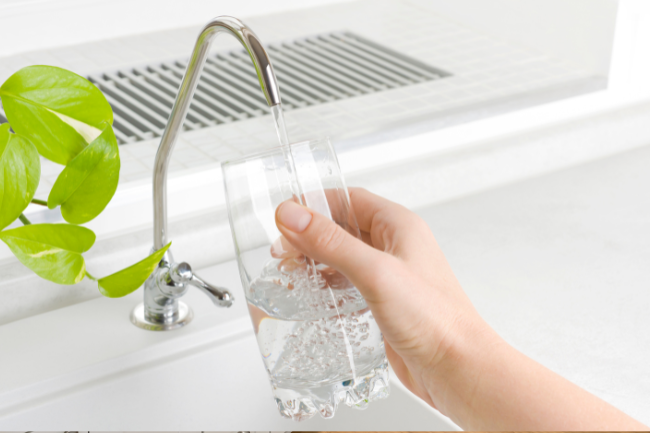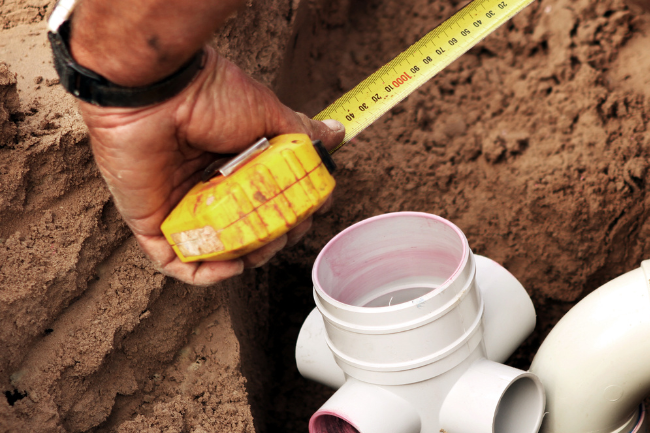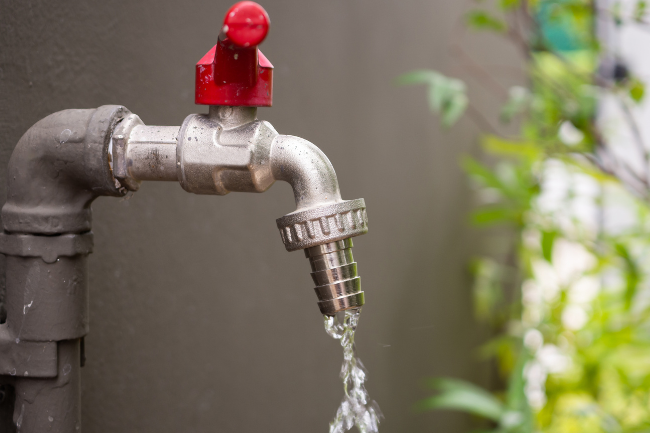What Causes a Water Main Line Break?
Posted by William Heinselman on
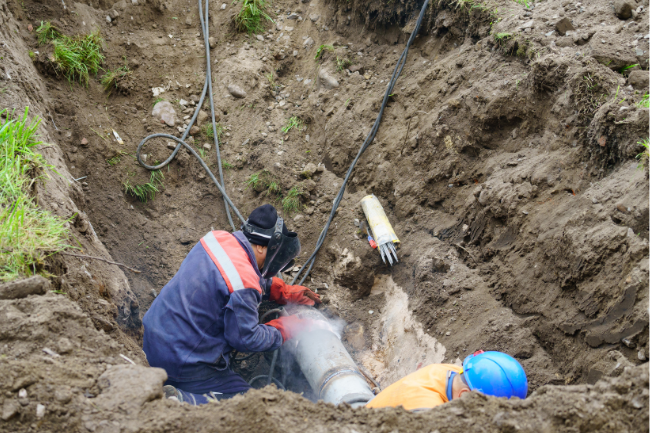
Ever wondered why water main line breaks happen? They can be a real headache, causing water shortages and property damage.
In this article, we're going to dive into the reasons behind these disruptions. From environmental factors to aging pipes, we'll take a deeper look into water main breaks and how they impact daily life.
Water Main Line Basics
A water main line, often simply called a water main, is a crucial component of a city's water distribution system. It's a large underground pipe that carries potable (drinkable) water from a water treatment plant to various locations within a city or municipality, including homes, businesses, and industrial facilities.
Causes of Water Main Breaks
Water main breaks can occur due to various reasons. Understanding these causes can help prevent and address them effectively. Here are some common reasons for water main breaks.
Materials
The type of material used for water mains can play a significant role in causing breaks. Over time, certain materials like cast iron or concrete can deteriorate due to corrosion or wear and tear. This weakening of the pipe material can make it more susceptible to cracks and ruptures.
As these pipes age, they become increasingly vulnerable, and the risk of a water main break goes up. Replacing older, fragile pipe materials with more durable and corrosion-resistant options is often a key strategy in preventing these disruptive incidents.
Temperature
Temperature fluctuations can also spell trouble for water mains. When it gets frigid, the water inside the pipes can freeze, and as it freezes, it expands, putting immense pressure on the pipe walls. Over time, this stress can lead to cracks or, in more severe cases, a full-blown water main break. So, when winter rolls around, the risk of these chilly mishaps tends to rise.
Pressure Changes
Water pressure changes can be another culprit behind water main breaks. Sometimes, abrupt shifts in water flow, like when a valve opens or closes quickly or during firefighting operations, create powerful pressure surges within the pipes.
This sudden pressure fluctuation can weaken the pipe structure over time, making it more prone to cracks and breaks. So, while water pressure is essential for getting water to our taps, it can also be a factor in those unexpected pipe mishaps.
Age of Pipes
Over the years, pipes can naturally deteriorate and weaken. Materials like cast iron or concrete, commonly used in older infrastructure, are especially vulnerable to corrosion and wear and tear. As these pipes age, they become increasingly fragile and susceptible to cracks and ruptures, making water main breaks more likely.
To reduce the risk, many communities are investing in the replacement and modernization of aging pipe systems to ensure a more reliable and resilient water supply.
Construction
Construction activities can be a double-edged sword when it comes to water mains. While crucial for urban development and maintenance, excavation and digging near underground pipes can unintentionally lead to water main breaks. Accidental damage from heavy machinery or digging in the wrong spot can puncture or crush the pipes.
It's a reminder that careful planning and coordination are essential to avoid these disruptions during construction projects and keep our water systems intact.
Tree Roots
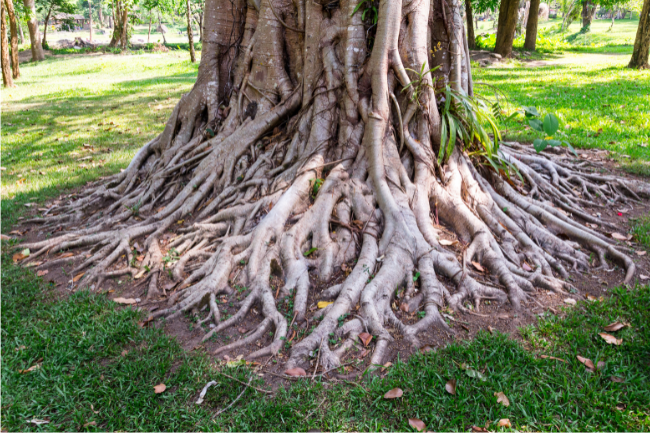
Tree roots can be a thorn in the side of water mains. These persistent natural explorers are always seeking water, and if there are small cracks or joints in the pipes, tree roots can infiltrate them. As they grow and expand within the pipes, they can cause blockages and put pressure on the pipe walls, ultimately leading to cracks and, eventually, water main breaks.
Implications of a Water Main Break
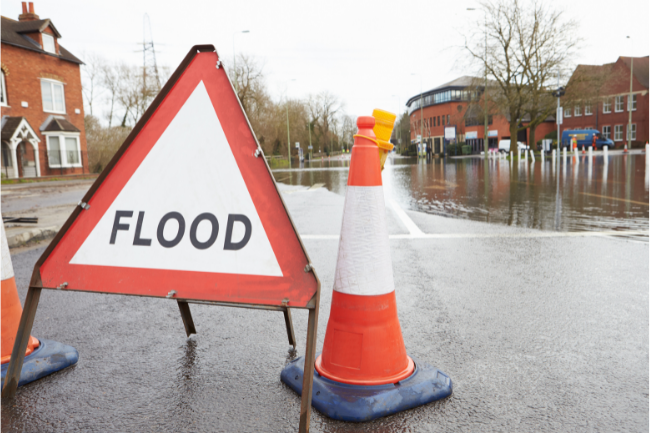
Now that we’ve discussed what can cause a water main line to break, let’s discuss what happens after the break. If you’ve ever seen a heavy flow of water down the side of the street, there’s a good chance that that is coming from a burst water main line underground.
- Erosion: As the surrounding area becomes soaked with the leaking water, the ground will be more susceptible to erosion. Excess erosion can lead to cracks in the streets and sidewalks, which in turn can impact the integrity of local infrastructure, putting entire communities at risk.
- Contamination: In some instances, broken water main lines can introduce harmful contaminants into the local potable water system, leading to a localized public health issue. This will require a Boil Water Advisory until the issue is thoroughly resolved.
- Water Shut Off: In order to repair a broken water main line, that line will need to be shut off temporarily. While this is a necessary step to take, it can be quite inconvenient for local families and businesses who no longer have access to water until the issue is resolved.
- Local Closures: Water main breaks have the potential to flood large areas. This means streets will be closed off until the leak is managed and residents can once again travel safely. Similar to a water shut-off, this can be a large inconvenience, though a necessary one for the health and safety of the community.
What to Do When a Water Main Breaks in Sacramento
When a water main line breaks in Sacramento, contacting Express Sewer & Drain is the smart move. Our experienced team can swiftly assess and repair the issue, whether it's due to freezing temperatures, soil shifts, or aging pipes. We can ensure a rapid response to minimize water wastage and restore your water supply efficiently and safely. Give us a call today to learn more about our services!
Topics: Municipal Plumbing, Plumbing Emergencies

